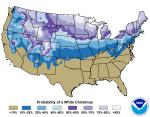Related radio news story by Debbie Johnson. For downloadable broadcast-quality audio, contact Johnson at 573-882-9183.
KIRKSVILLE, Mo. – The earth beneath your feet may seem ordinary and benign. It’s anything but. Good soil can mean the difference between a garden that thrives and one that struggles and dies. Plants depend on soil for water, nutrients, minerals and even physical support.
You may need to add organic matter to your soil to improve its structure and composition, said Jennifer Schutter, horticulture specialist for University of Missouri Extension.
Among the most common sources of organic matter for amending soil are peat moss, manure, wood byproducts and compost.
Peat moss
Peat moss is rich in organic matter and can hold 20 times its weight in water. Peat moss will make the soil more granular and more easily worked.
“It hastens the escape of excess water and at the same time absorbs and holds more water for plants,” Schutter said.
Peat allows more air to enter the soil, encouraging the growth of roots and microorganisms that help make plant nutrients more available. While peat moss will improve your soil’s composition, it doesn’t contain a lot of nutrients and should not be considered a fertilizer, Schutter said.
Manure
Compared to peat moss, manure contains more nutrients, usually has lower acidity and doesn’t last as long in the soil. Results from adding manure will vary depending on the manure’s nutrient value, degree of decomposition, and freedom from weed seeds and disease organisms, Schutter said.
Never use fresh manure, she said. Composting manure will kill unwanted seeds and harmful organisms. Aged manure will lose some nutrients, but well-rotted, old manure is far better for plants than fresh manure with straw residue.
“Processed or rotted manure may be used as a soil amendment, mulch or top-dressing,” Schutter said. “No more than 1-2 inches of processed manure should be added to a flower bed.”
Poultry manure is an option, but it contains more nitrogen than livestock manure and so it should be used with caution, Schutter said.
“When preparing flower beds and lawn seed beds, only use a 1- to 2-inch layer of rotted poultry manure,” she said. “If you’re using processed types, only a 3/4- to 1-inch layer should be added.”
Wood byproducts
Be careful if you decide to use sawdust, wood shavings, shredded wood, pulverized bark or wood chips for soil improvement, Schutter cautions. The microbes that decompose these materials will pull nitrogen from the soil and may leave your plants nitrogen-starved. To correct this, Schutter suggests that you add nitrogen fertilizer when these materials are mixed with soil or composted.
Compost
Compost offers many of the same benefits as manure and may be used at the same rates. It can be used in potting soil, in preparing flower beds and gardens, and as a mulch for trees and shrubs.
“Chopped straw, grass clippings, leaves, weeds and other plant refuse can be composted,” Schutter said.
You start by putting about 6 inches of plant materials, both dried and fresh, into a well-ventilated bin. This will give you a good carbon-to-nitrogen ratio, she said. If you don’t have green plant material, you can substitute manure or fertilizer as your nitrogen source.
Sprinkle one cup of a garden fertilizer such as 10-5-4 or 12-12-12 for each 25 square feet,” Schutter said. Cover the plant layer with a half inch of soil. Use several layers to complete the heap and keep it moist but not soaking wet. Leave the top of the heap flat, or with a slight depression, so that rain can soak in.
Turn the heap once a month during warm weather. Turning isn’t necessary in the winter, Schutter said. The materials will decompose completely in four to 12 months, depending on the turning frequency.
Your local MU Extension center can provide additional information on soil amendments.
Related MU Extension publications available for free download:
Read more http://extension.missouri.edu/news/DisplayStory.aspx?N=1746






